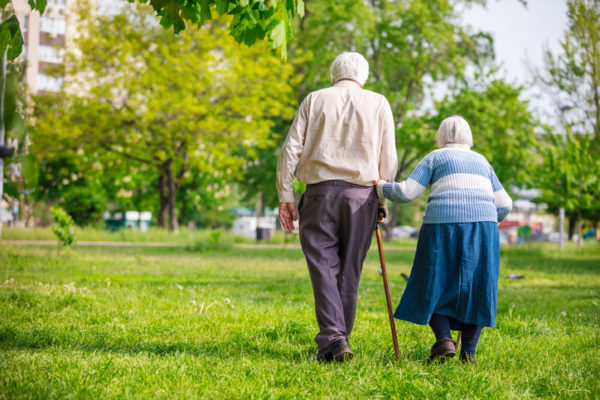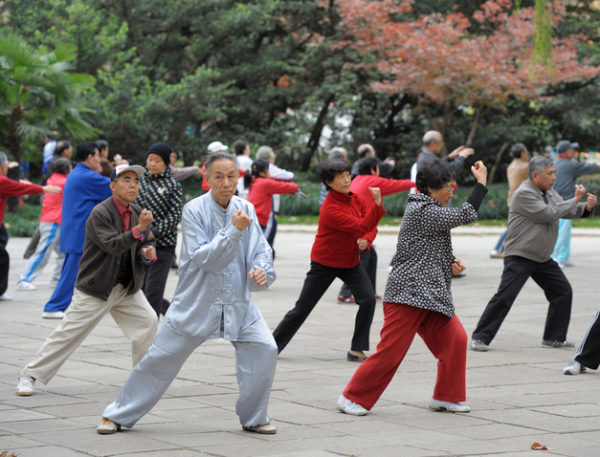Building age-friendly cities: A manifesto for change
Tine Buffel, Sophie Handler and Chris Phillipson
This article outlines the focus of a new publication, Age-Friendly Cities and Communities: A Global Perspective (January 2018), published by Bristol University’s Policy Press.

The impact of population ageing on the economy and health care is much discussed. But where older people live is important as well. Mostly this will be in the cities of the world, these likely to have 25% or more of their populations 60 and over by 2030. This is raising urgent questions such as: how can cities adapt to ageing populations? How can the resources of the city be harnessed to improve the lives of older people? One response has been the move – led by the World Health Organization – to create ‘age-friendly’ cities, with the development of the Global Network of Age-Friendly Cities and Communities. Launched in 2010, the Network has grown from a handful of members to one covering over 500 cities and communities across the Global North and South. Some of the key actions arising from age-friendly work have included: challenging stereotypes of older people; re-designing and improving access to outdoor spaces; strengthening support networks within neighbourhoods; and campaigns tackling social isolation and loneliness.
But the barriers to age-friendly work are increasingly apparent. Age-friendly initiatives have run parallel with the impact of economic austerity. Many cities in the WHO network have faced reductions in services supporting older people, examples including the closure of senior centres, libraries, and the rationing of home-based care. Cuts to these services have been highly detrimental to older people who spend around 80% of their time at home or within their immediate neighbourhood.
The debate around age-friendly cities has created an important agenda for re-thinking the way in which we manage our urban environments. Some of the questions raised include: do older people have a ‘right’ to a share of urban space? Is the idea of ‘age-friendly’ caring communities compatible with modern urbanisation? Such questions suggest major issues for the age-friendly movement, in particular whether the idea of ‘age-friendliness’ will progress mainly as a form of ‘branding’ for cities concerned with improving their status. Alternatively, will the movement begin to engage with the serious problems facing cities, notably widening inequalities, the impact of climate change, problems of homelessness, and the lack of affordable housing? These issues have the potential to undermine interventions aimed at improving the lives of older people; they will almost certainly need a stronger response than presently exists from those involved in age-friendly work.
Our book Age-Friendly Cities and Communities: A Global Perspective* offers a ‘Manifesto for Change’ for the age-friendly movement, built around four key themes: first, challenging social inequality; second, building new urban partnerships; third, developing neighbourhood support; fourth, co-researching age-friendly communities.

The first area for development concerns grounding age-friendly work in policies which challenge social inequality. A key task must be addressing gender, social class, ethnic and other inequalities affecting the older population. In the Global North, the age-friendly brand has been adopted in various guises in many (mainly) white communities, but is much less evident amongst black and minority ethnic groups. However, it is precisely the latter that experience the most disadvantaged and least age-friendly communities. It will be difficult to take age-friendly policies seriously unless there is closer engagement with those neighbourhoods and groups of older people abandoned in the face of urban change. Acknowledging social and ethnic diversity is thus an important issue for the age-friendly movement to address. The implications are wide-ranging, including: responding to different cultural interpretations of what ‘age-friendliness’ might mean; shaping policies around the needs of particular groups with contrasting migration histories and life course experiences; recognizing distinctive forms of inequality experienced by particular ethnic groups, notably in areas such as health, income, and housing; and understanding the impact of racism on communities and the challenge this presents for the achievement of successful age-friendly work.
The second issue concerns building collaborations with the range of movements campaigning to improve urban environments. The growth of age-friendly work has been led (e.g. in the UK) mainly by departments within local government. In other countries (e.g. the USA) non-governmental organisations have been more influential. Although these different approaches have contributed to a significant expansion in projects, the range of partnerships with non-age-related organisations has been limited, especially those, for example, leading urban regeneration schemes, developers, and the business sector more generally. Encouraging links between different urban programmes and partners could help to expand the range and quality of age-friendly interventions. For example, ideas from the ‘smart’ and ‘sustainable’ cities movement around developing alternatives to cars in cities, increasing energy efficiency, and reducing pollution, should also be viewed as central to making cities more ‘age-friendly’. Engagement with this type of work has the potential to produce both further resources for the movement as well as adding to the sustainability of existing projects.

Third, attention must be given to devising new interventions at a neighbourhood level, given the policy emphasis on community-based care. Some organisational developments (notably in the USA) which have emerged outside the age-friendly movement merit closer attention, for example, the Village model, and Naturally-Occurring Retirement Communities (NORCS). Villages are membership-based associations, created and managed by older people, that provide supportive services and social activities. NORCS represent partnerships between statutory and voluntary bodies to enhance services for older people living in geographically defined areas with relatively high densities of older adults. Both approaches stress the advantages of older people working in a collective way to solve many of the issues they face as individuals – whether accessing reliable home repair services, organising food co-operatives, help with technology, or getting financial advice.
Fourth, promoting the participation of older people has been a key theme in the development of the age-friendly movement. Various approaches have been adopted to assess the ‘age-friendliness’ of communities, ranging from consulting older residents (distributing surveys, conducting focus groups) to involving them in photo-voice activities, working groups or steering committees. Whilst such approaches encourage older people’s input they have been less successful in making older people central to the development of age-friendly activity. ‘Co-research’ has been presented as a way forward in this regard, i.e. research conducted ‘with’ or ‘by’ older adults rather than ‘to’, ‘about’ or ‘for’ them as research subjects. This approach provides an opportunity for older people to take a leading role in research, and contribute to the process of social change in various ways. Co-research could become an important tool for involving older people directly in the process of urban development, as well as in developing new approaches to supporting people within the community.
Finally, to what extent can the challenge of population ageing and urbanisation be used to resolve some of the major issues facing society? Age-friendly initiatives could drive forward new ideas relating to improving urban environments (e.g. highlighting the impact of pollution); developing new forms of community organisation and solidarity (e.g. food and energy co-operatives); supporting inter-generational cohesion (e.g. older people working with younger people in schools and other organisations). The argument of is that doing ‘age-friendly’ work also means recognising and challenging the wider inequalities and injustices which affect city life. Standing apart from these will inevitably weaken both the age-friendly movement and many other campaigns for improving the lives of all of those living in cities.
*Buffel, T., Handler, S. and Phillipson, C. (Eds), Age-Friendly Cities and Communities: A Global Perspective. Bristol: Policy Press.